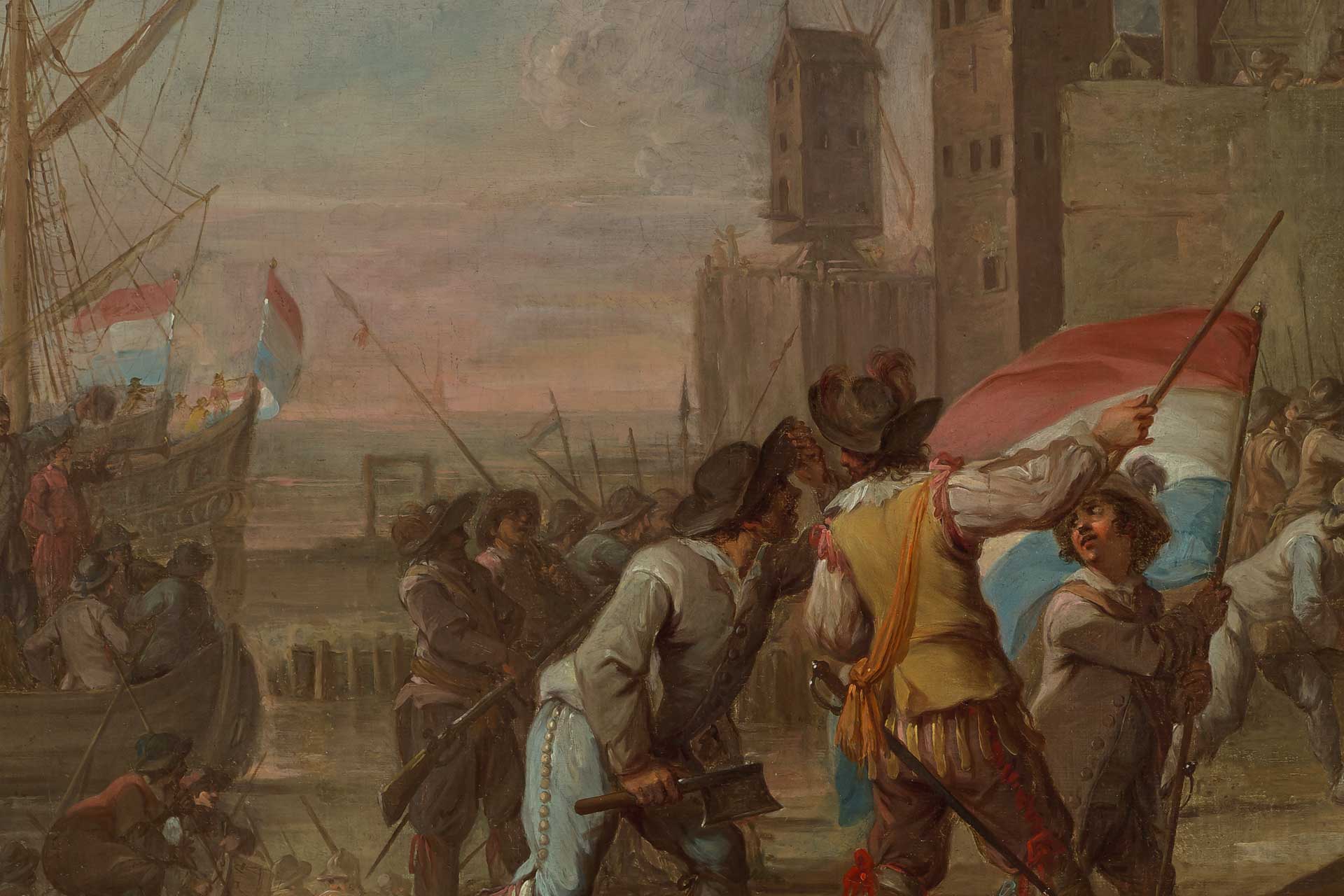“Do not be troubled, my Lady, these are just a bunch of… beggars.”
The epithet of geuzen (Dutch for “beggar”) was first hurled at noblemen protesting the policies of Philip II, but it quickly became a patriotic, highly political point of pride for the rebels who would fight to form the early Dutch Republic.
A note on language: when there is an international or English-language name in common use, that will be used. The version of the name in the individual’s modern local vernacular will follow with the two-letter language code.
Contents
Janus Dousa
Jonkheer Jan van der Does, Heer van Noordwijk (NL)
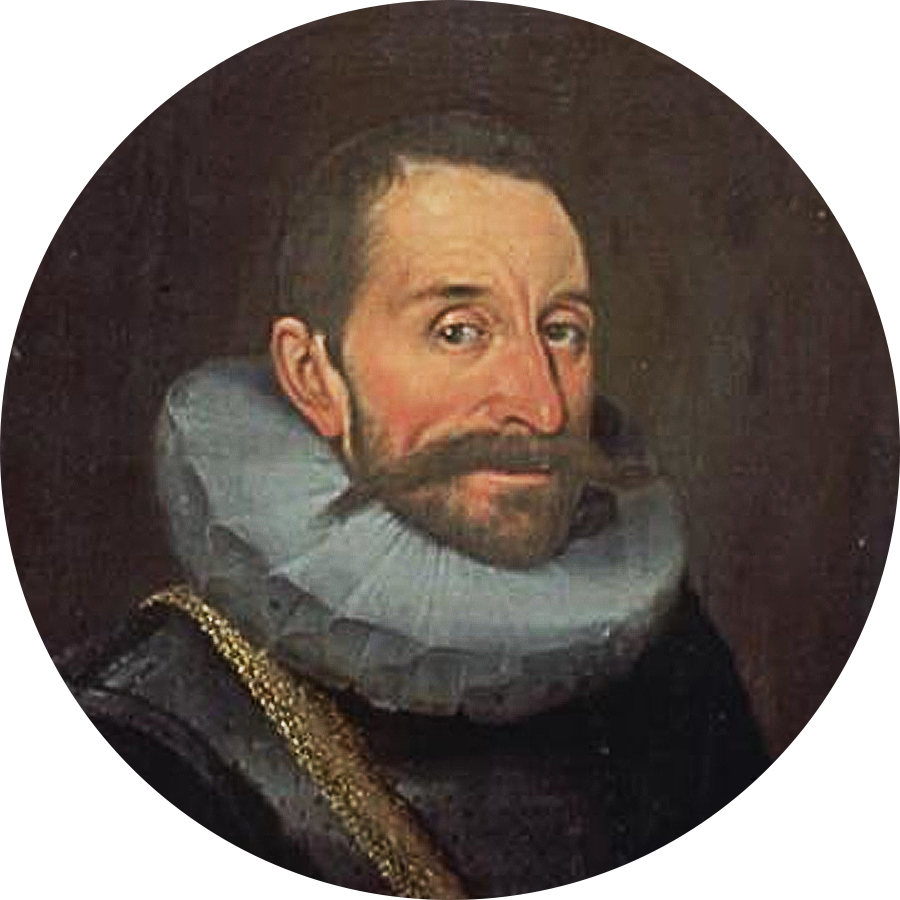
1545-1604: A Dutch nobleman who participated in the 1574 defense of Leiden, he went on to forge political alliances with the English as well play a foundational role in the establishment and early development of the University of Leiden. At the university, he was able to settle into an influential role as curator of its first library and notable Latin poet and author of the first critical history of the province of Holland.
For More: J.A. van Dorsten, Poets, Patrons, and Professors : Sir Philip Sidney, Daniel Rogers and the Leiden Humanists and Chris Heesakkers, “Lipsius, Dousa and Jan van Hout: Latin and the Vernacular in Leiden in the 1570s and 1580s”
William II de la Marck, Lord of Lumey
Willem II van der Marck, heer van Lumey (NL)
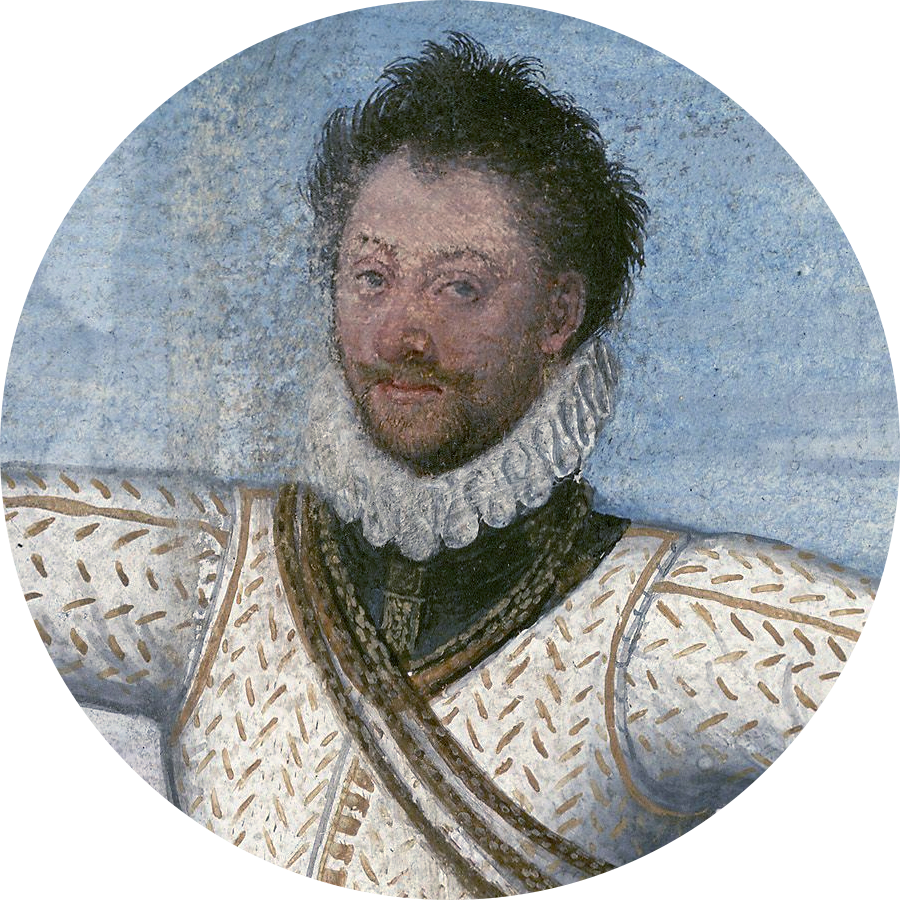
1542-1578: In the wake of the Duke of Alba’s “Council of Blood” and the crushing of the 1568 revolt, a host of rebels, pirates, scoundrels, freedom fighters, and criminals calling themselves watergeuzen (“sea beggars”) continued to harass Spanish shipping on the sea. Their “admiral” was de la Marck, who coordinated the April 1572 capture of Den Brielle – an act that sent shock waves throughout the Low Countries and reignited the war. Yet, his fiercely independent and opportunist qualities saw him exiled the the rebels’ territory in 1576.
For More: Peter J. Arnade, Beggars, Iconoclasts, and Civic Patriots: The Political Culture of the Dutch Revolt
Philips of Marnix, Lord of St. Aldegonde
Filips van Marnix, Heer van Sint-Aldegonde
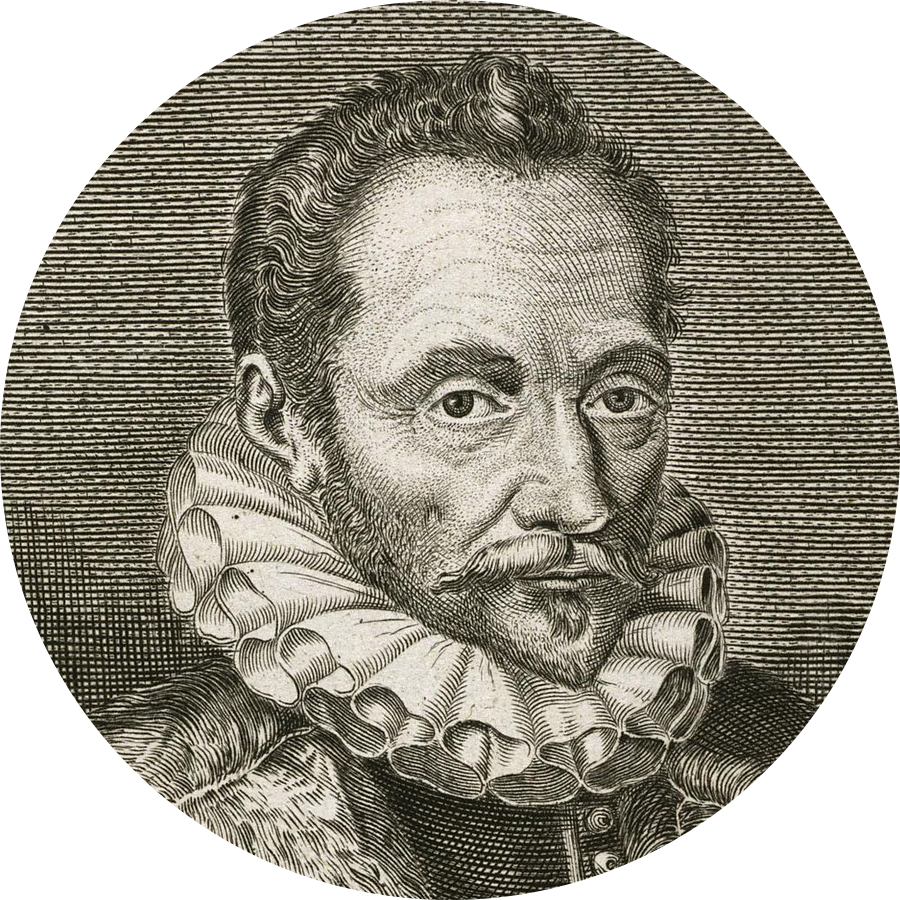
1540-1598: As the right hand man of William the Silent, Marnix had an active role in shaping the cultural and political nature of the revolt through his authoring of political tracts, cryptography, international diplomacy, and finally service as burgomaster of Antwerp at the time of its siege. After surrendering the city and being harangued by his once-allies, he largely retired from public view. Having studied under Calvin, he’s also known for his anti-Catholic work The Beehive of the Roman Church and his translations of The Psalms.
For More: Fred Edwin Beemon, The Ideology of Rebellion: Philippe de Marnix, Sieur de Sainte Aldegonde, and the Dutch Revolt and Rudolf De Smet, “Humanist Friendship, Politics And Religion In Marnix’s Correspondence Just Before The Fall Of Antwerp: Inconstancy Or Constancy?”
Paulus (Paul) Buys, Lord of Zevenhoven
Pauwels Buys, Heer van Zevenhoven (NL)
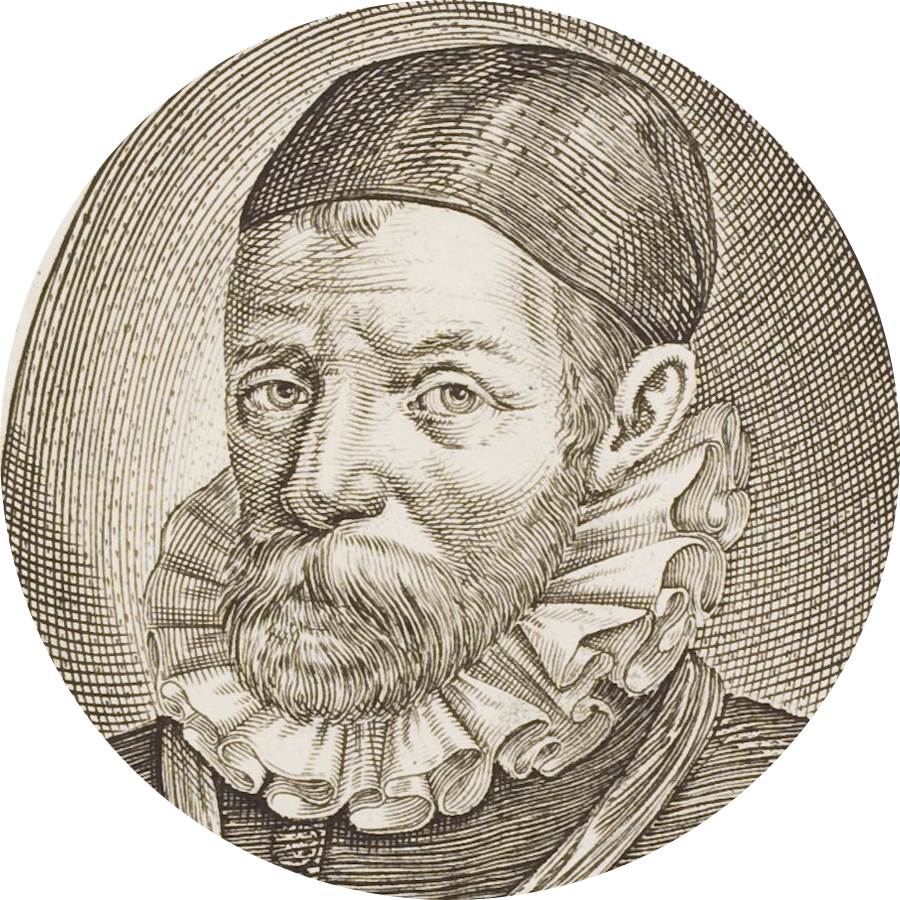
1531-1594: Buys moved up the ranks in the provincial government of Holland and was one of the most important rebel politicians during the early years of the revolt. Though Catholic, Buys sided with William of Orange and the rebel cause against the overreaching policies of Philip II and his governor, the Duke of Alba. However, both his religion and his Hollander politics ostracized him from the Earl of Leicester, leading to his downfall
For More: James Tracy, The Founding of the Dutch Republic War, Finance, and Politics in Holland, 1572-1588
Johan van Oldenbarnevelt
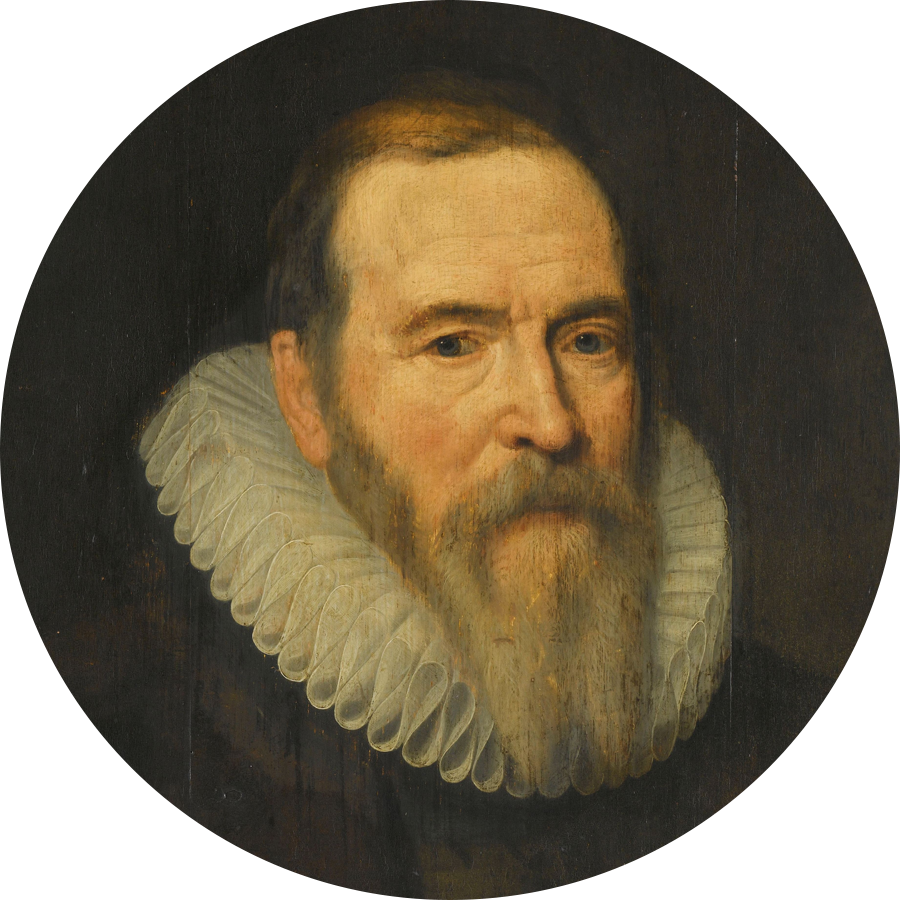
1547-1619: One of the greatest statesmen in Dutch national history, Oldenbarnevelt was the mastermind behind the 1602 consolidation of competing merchant ventures into the Vereenigde Oostindische Compagnie (the famed Dutch East India Company) and the 1609 Twelve Year’s Truce. In the midst of tumultuous religous debates, his backing of the Arminian faction and antagonistic relationship with Prince Maurice would lead to his arrest and execution on trumped-up charges.
For More: Jan den Tex, Oldenbarnevelt and Frank de Hoog, “A State Beheaded: The Political Fall of Land’s Advocate Johan van Oldenbarnevelt”
Kenau Simonsdochter Hasselaer
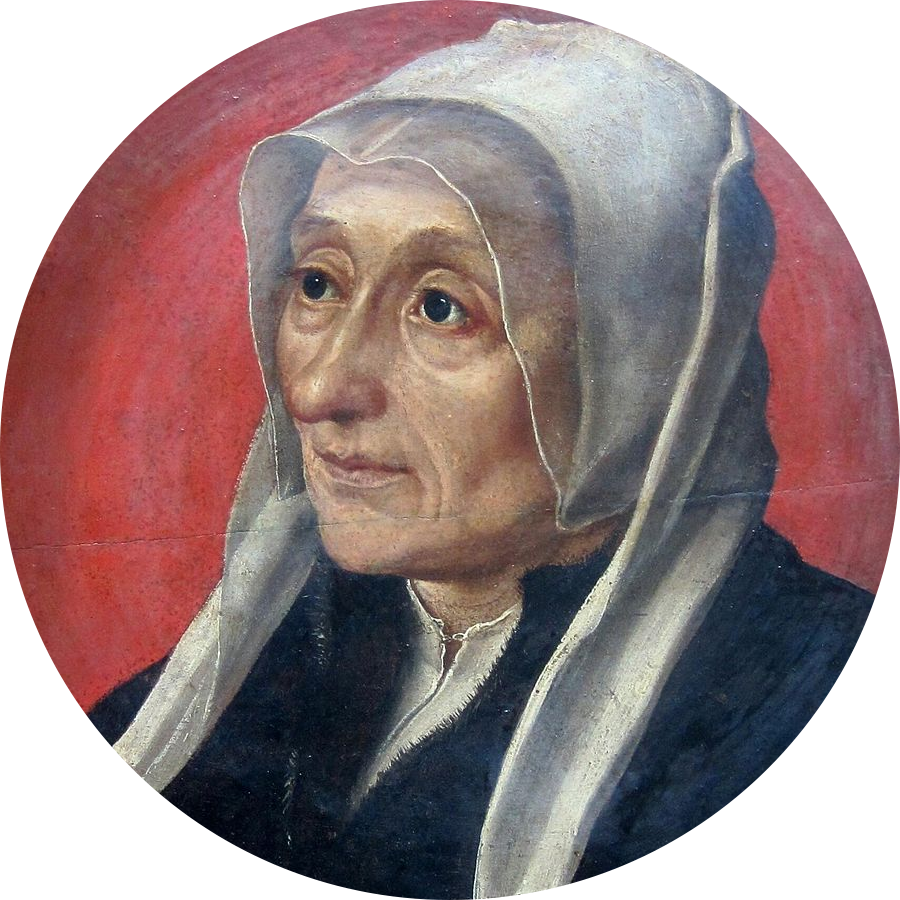
1526-1588: Royalist forces laid siege to the city of Haarlem in 1573. For seven months, the brave defenders of the city kept up the fight along city walls and in the surrounding fields and trenches. Among them the stories tell of an older woman who also took up arms: Kenau Simon’s daughter, a woodseller turner soldier. In the years following the siege, the story of “Captain Kenau” – heroic defender of Haarlem armed with halberd, sword, and gun – became famous and spread throughout the Low Countries.
Maarten Schenck van Nydeggen

ca. 1540-1589 Much like fictional Don Quixote, Schenck was something of a knight errant who appears to have placed high value on honor and valor in battle, fighting on both sides of the conflict.
He originally served in William the Silent’s own cavalry, but following a legal dispute about the inheritance of Beijenbeek Castle (which he lost), he took up with the Spanish until at last he rejoined the Dutch rebels in 1585 (allegedly feeling disrespected by Parma other Royalist commanders). From that point on, he would fight for the Dutch – and also for the Protestant side in the nearby Cologne War.
For More: Olga van den Broek, Maarten Schenck van Nijdeggen: Carrière in Oorlogstijd (in Dutch)
The Dutch Revolt which began in 1568 is not as simple as the story of one nobleman rebelling against the King of Spain. There were supporters and partisans on both sides of the conflict enabling – and often forcing the hand of – that one noble house and their Habsburg overlords.
Back to Leaders, Soldiers, & Politicians from the Dutch Revolt
